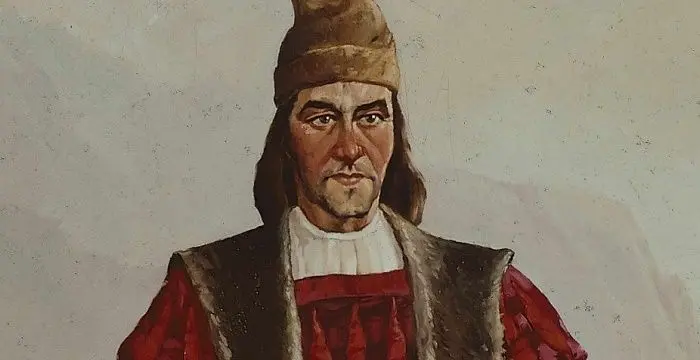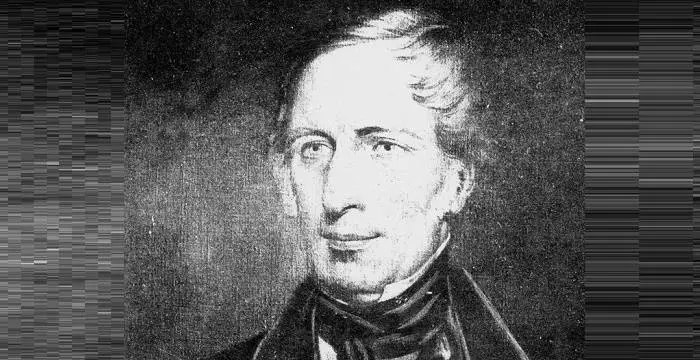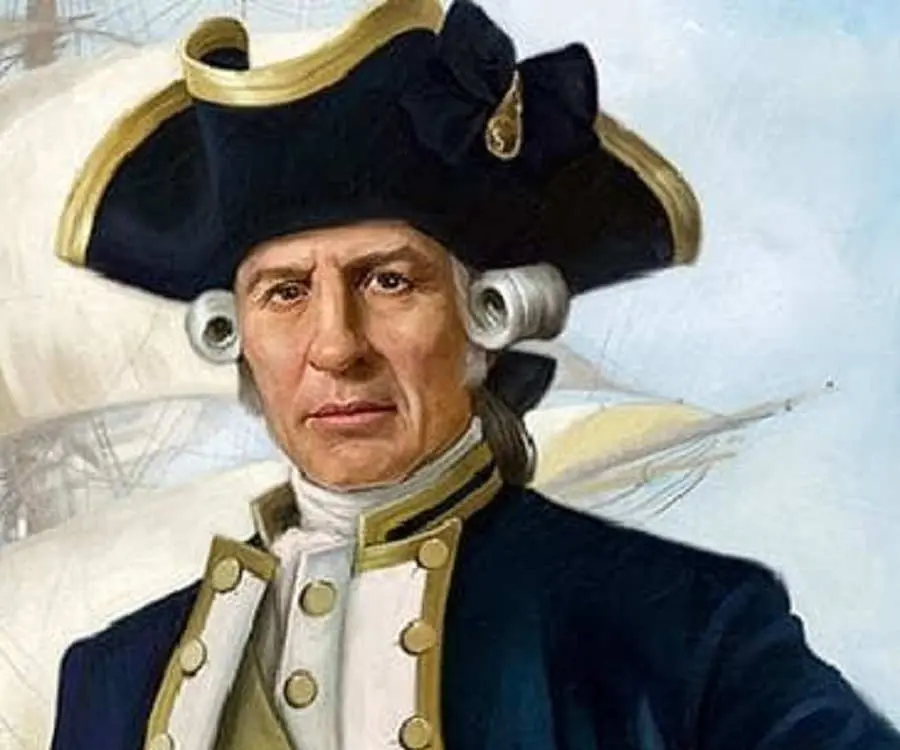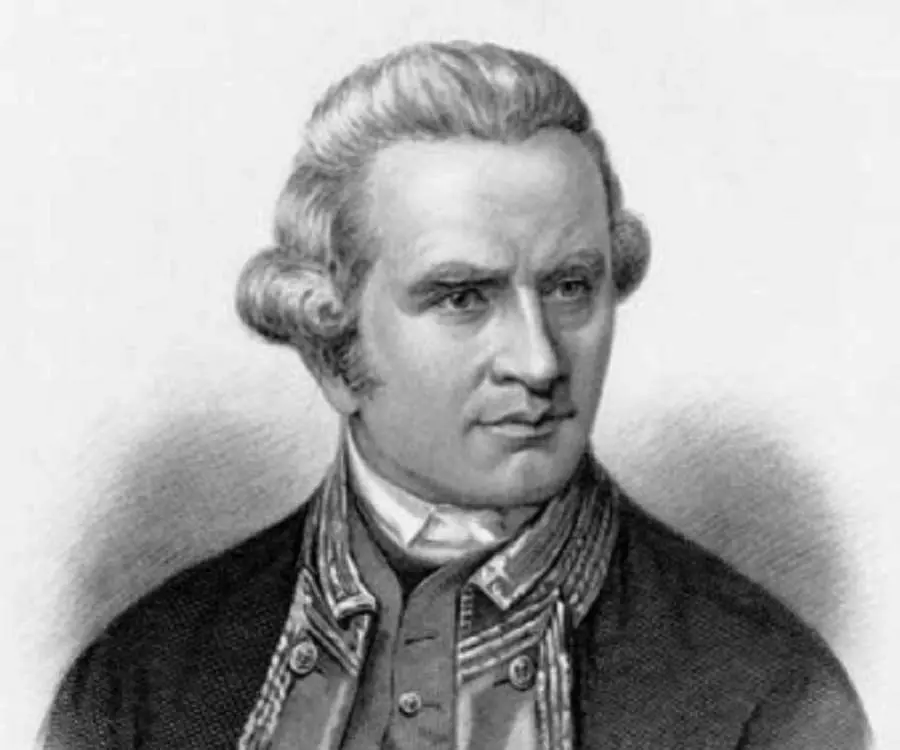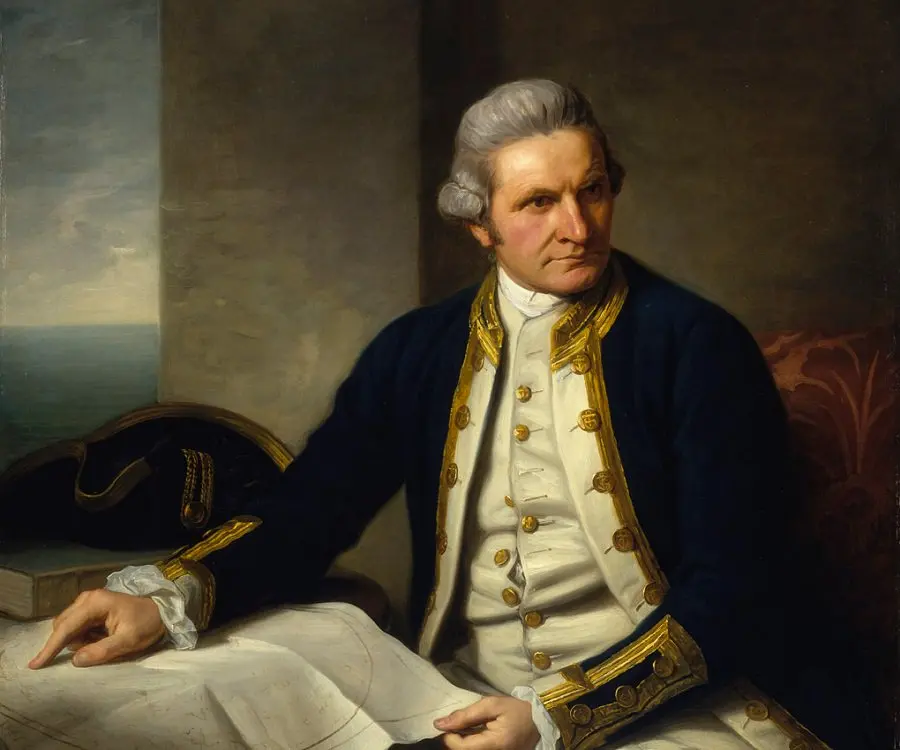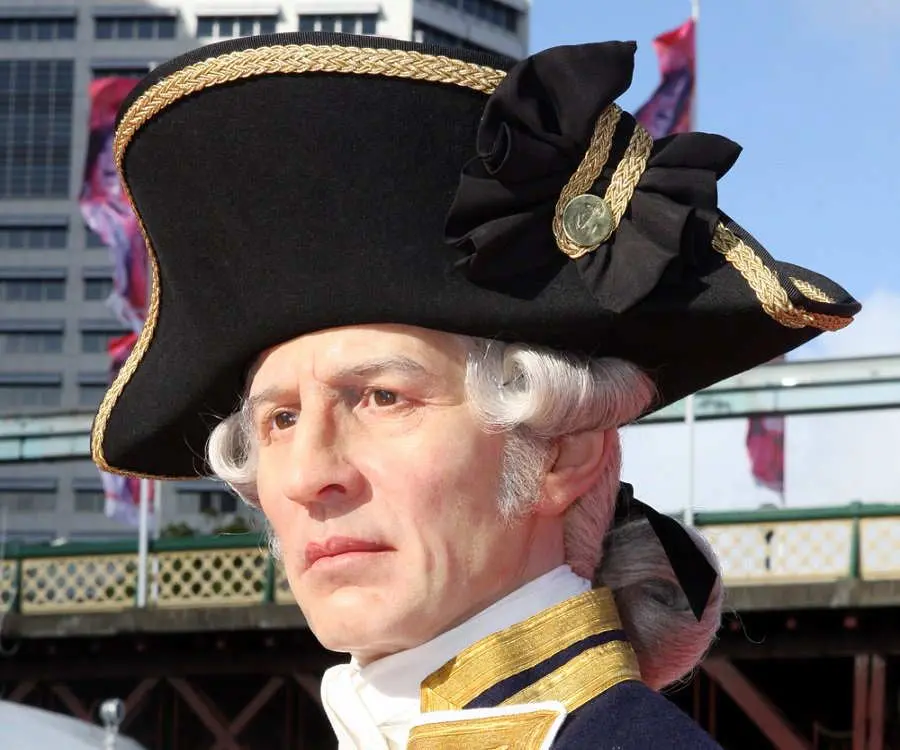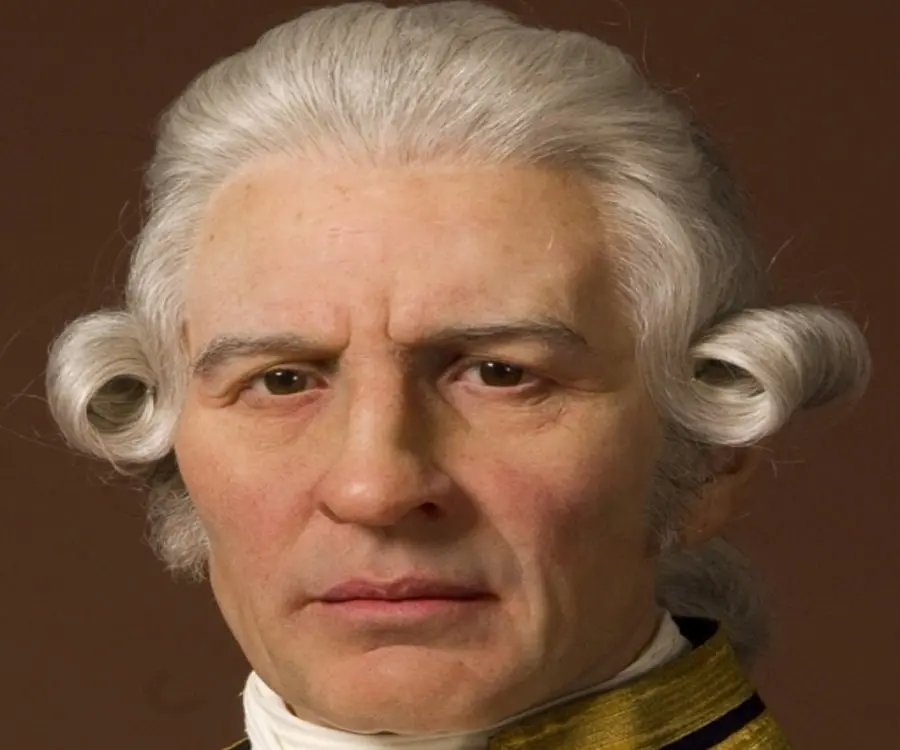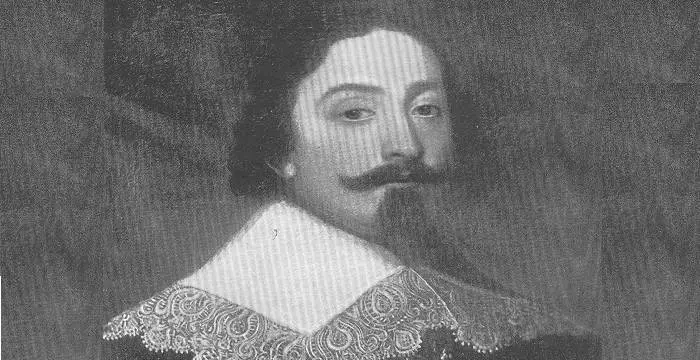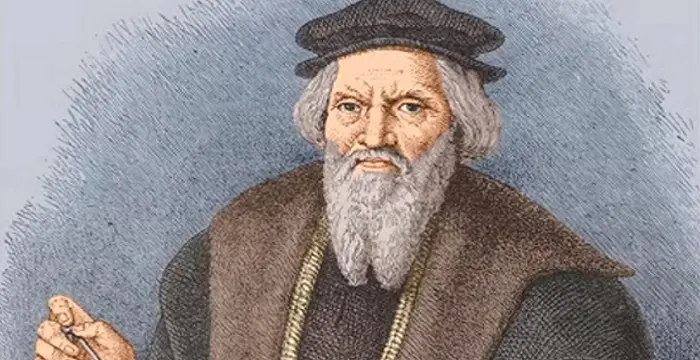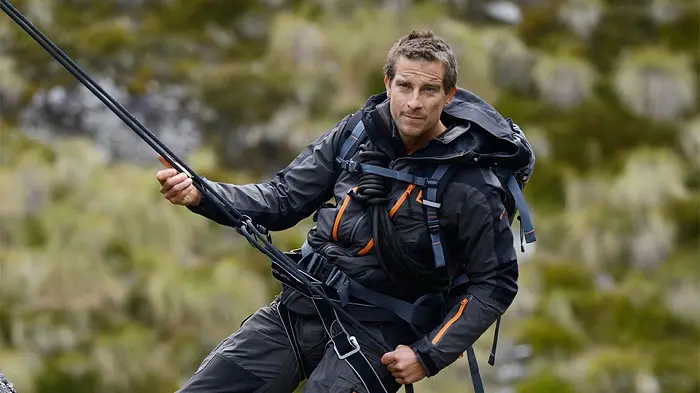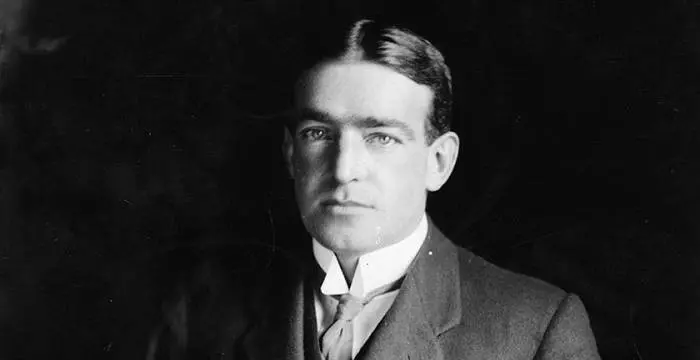
James Cook - Explorers, Family and Childhood
James Cook's Personal Details
James Cook was a British explorer, captain and cartographer
| Information | Detail |
|---|---|
| Birthday | November 7, 1728 |
| Died on | February 14, 1779 |
| Nationality | British |
| Famous | Miscellaneous, Explorers, Explorers, Navigator |
| Spouses | Elizabeth Batts (m. 1762–1779) |
| Siblings | Christiana Cook, Jane Cook, John Cook, Margaret Cook, Mary Cook, William Cook |
| Known as | Captain James Cook |
| Childrens | James Cook |
| Universities |
|
| Discoveries / Inventions |
|
| Birth Place | Marton, England |
| Gender | Male |
| Father | James Cook |
| Mother | Grace Pace Cook |
| Sun Sign | Scorpio |
| Born in | Marton, England |
| Famous as | Explorer & Navigator |
| Died at Age | 50 |
// Famous Explorers
Henry Hudson
Henry Hudson was an early 17th century English navigator and explorer. This biography of Henry Hudson provides detailed information about his childhood, life, achievements, works & timeline
Bartolomeu Dias
Bartolomeu Dias was a Portuguese explorer who became the first European to reach Indian Ocean from the Atlantic. This biography of Bartolomeu Dias provides detailed information about his childhood, life, achievements, works & timeline.
Charles Sturt
Charles Sturt was an English military officer and explorer who led three major expeditions towards the interior of eastern Australia. This biography provides detailed information about his childhood, life, achievements, works & timeline
James Cook's photo
Who is James Cook?
James Cook was a famous British explorer who discovered New Zealand and surveyed and mapped features and coastlines, especially the Pacific Ocean in great details and on a scale hitherto not achieved. His adventures on his ship, the ‘HMS Endeavor’ and his discoveries have steered generations of voyagers, explorers and cartographers. Born in the Scottish countryside, Cook began his tryst with the ‘unknown’ when he started off as the Captain of the Royal Navy and took command of the first scientific manned expedition to the Pacific. He returned victorious, discovering New Zealand and the Great Barrier Reef of Australia; the two places still considered some of the most dangerous areas ever navigated by a human. Since then, he undertook a number of expeditions; from Antarctica to New South Wales and present-day Tonga to the legendary continent, ‘Terra Australis’. Cook was a man of perseverance and was responsible for not just pushing himself into the unknown but a horde of others, who dived into the depths of the indefinite along with him. However, he was scoffed by many for his hygiene measures and the stringent diet that his men had to follow in order to avert the deadly gum disease; scurvy. His coastal charting is still considered one of the most advanced at his time and has helped in many present-day discoveries. If you would like to learn more interesting information about Captain James Cook, scroll further.
// Famous Navigator
Henry Hudson
Henry Hudson was an early 17th century English navigator and explorer. This biography of Henry Hudson provides detailed information about his childhood, life, achievements, works & timeline
Ferdinand Magellan
Ferdinand Magellan was a famous Portuguese navigator and explorer. This biography profiles his childhood, life, explorations, achievements and timeline.
Abel Tasman
Abel Tasman was a Dutch explorer who discovered New Zealand. This biography gives detailed information about his childhood, life, works and timeline.
Childhood & Early Life
James Cook was born to James Cook, a farm laborer and Grace Pace in Marton, Yorkshire. He was the second of the eight children born to the couple and was baptized at the St. Cuthbert Church.
In 1736, the family moved to a farm in Great Ayton, where he attended a local school. After five years of education, he began working for his father, who by then, was promoted to farm manager.
He worked as a shop boy in a grocery shop in 1745 and it is believed that this was where his fascination with the sea began as he would look out the window and gaze at the big blue sea.
Subsequently, he began working as a merchant navy apprentice, plying coal along the English coast. During his free time, he studied the fundamentals of mathematics, navigation and astronomy; all of which would prove to be useful in his later life. He completed his three-year apprenticeship and began working on trading ships in the Baltic Sea.
After he passed his exams in 1752, he was promoted through the merchant navy ranks and within three years, he volunteered to be a part of the Royal Navy; a time during which Britain was preparing itself for a war that would later be known as the ‘Seven Years’ War’.
Career
His first position in the Royal Navy was with the ‘HMS Eagle’, where he took part in the capture of one French warship and the sinking of another. He was promoted to the position of ‘boatswain’.
In 1757, he was allowed to handle and traverse a ship of the King’s armada. He was then posted to the ‘HMS Solebay’, as the master, where he worked under Captain Robert Craig.
During the period of the ‘Seven Years’ War’, he captured the Fortress of Louisburg and showed his flair for cartography and surveillance. During the 1760s, he surveyed the coast of Newfoundland and produced large-scale accurate maps of its position, outlines and coasts.
In 1766, he was asked to travel to the Pacific Ocean to record the transit of planet Venus across the Sun by the Royal Society. It was after he agreed to the excursion that he was promoted to lieutenant and ordained as the commander of the expedition, which set sail two years later.
The ship arrived in Tahiti on April 13, 1769, where Cook and his crew recorded their observations of Venus’ transit across the sun. However, the observations were later deemed as inaccurate.
He then sailed to New Zealand and mapped the country’s coastline, reaching the coast of Australia on April 19, 1770. He became the first European to have encountered the eastern coastline and penned down his first experiences with the indigenous, aboriginal folk of Australia.
He is responsible for having discovered modern-day Kurnell Peninsula and ‘Sting Ray Harbor’ or Botany Bay. During one leg of the expedition, his ship, the ‘HMS Endeavor’ was badly damaged and his voyage was delayed by 7 weeks. He then set sail on August 22 and sailed across Possession Island, Torres Strait, Indonesia, the Cape of Good Hope and finally, the Saint Helena island, in 1771.
Following this expedition, he was promoted to the rank of commander. In 1772, he was sent to look out for the fabled continent, the ‘Terra Australis’, for which he set sail aboard the ‘HMS Resolution’.
He orbited the globe in the southern hemisphere and on January 17, 1773, he became the first man to cross the Antarctic Circle.
He almost stumbled upon mainland Antarctica and then on his return to New Zealand, he discovered the Friendly Islands, Easter Island, Norfolk Island, Vanuatu, New Caledonia and also mapped South Georgia.
Before returning to England, he made a trip to South Africa and from then-on continued on his journey back to his homeland. His reports finally put an end to the myth of Terra Australis.
He was promoted to the rank of post-captain and was offered a nominal retirement from the Navy. However, he could not be kept away from the sea for too long. He volunteered to discover the Northwest Passage on the ‘HMS Resolution’.
He travelled north and in 1778 became the first European to visit the Hawaiian Islands and then went on to explore the west coast of North America. He was responsible in naming ‘Cape Foulweather’, due to the bad weather conditions at the time. He discovered and mapped Cook Inlet and returned to Hawaii in 1779.
Major Works
Many of his journals were published upon his homecoming from his first voyage, which was from 1768 to 1771. He was ordained a hero among the masses and the scientific community and many of his readings or discoveries are used by cartographers and explorers even today.
Awards & Achievements
He was made a Fellow of the Royal Society.
In 1776, he won the Copley Gold Medal for his successful work in curbing the outbreaks of scurvy among his crew.
He has been described as ‘the first navigator in Europe’ in the House of Lords.
Personal Life & Legacy
James Cook married Elizabeth Batts, on December 21, 1762. They had six children together; James, Nathaniel, Elizabeth, Joseph, George and Hugh.
When he was not exploring and out at sea, he would spend time with his family in the East End of London.
On February 14, 1779, when he was in Hawaii, he was struck on the head and stabbed to death by Hawaiian villagers. His body was dragged away, parched, eviscerated and the bones were scrubbed. Some of his other remains were buried at sea, after an appeal by his crew.
Following his death, the author abbreviation ‘Cook’ is used when citing a botanical name. The ‘Cook Collection’ in the Australian museum holds all of James Cooks’ artifacts that he collected over his three voyages.
His 12 years of sailing around the Pacific Ocean, his journals, the artifacts and his mapping has proved to be useful for professional cartographers or voyagers. Several of the islands he chanced upon were named by him including the ‘Sandwich Islands’.
A US coin, the 1928 half dollar, endures an image of the voyager. The site where he was found dead in Hawaii is marked by a white obelisk. There are also a number of institutes that are named after him including ‘James Cook University’. Other places such as Cook Islands, Cook Strait, Cook Inlet and the cook crater on the moon are also named after him and his achievements.
Trivia
This world famous voyager, who belonged to the 18th century, has no descendents. All of his children either died before him or died without bearing any children of their own.
// Famous Miscellaneous
Jason Simpson
Jason Simpson is the son of former NFL running back, broadcaster and actor O. J. Simpson. Check out this biography to know about his childhood, family, life, and little known facts about him.
Melissa Brim
Melissa Brim is the ex-girlfriend of former professional boxer Floyd Mayweather Jr. Check out this biography to know about her birthday, childhood, family life, achievements and fun facts about her.
Joyce Meyer
Joyce Meyer is a Christian author and speaker. This biography provides detailed information about her childhood, life, achievements, works & timeline
James Cook's awards
| Year | Name | Award |
|---|---|---|
Other | ||
| 0 | - Copley Gold Medal | |
James Cook biography timelines
- // 1736In 1736, the family moved to a farm in Great Ayton, where he attended a local school. After five years of education, he began working for his father, who by then, was promoted to farm manager.
- // 1745He worked as a shop boy in a grocery shop in 1745 and it is believed that this was where his fascination with the sea began as he would look out the window and gaze at the big blue sea.
- // 1752After he passed his exams in 1752, he was promoted through the merchant navy ranks and within three years, he volunteered to be a part of the Royal Navy; a time during which Britain was preparing itself for a war that would later be known as the ‘Seven Years’ War’.
- // 1757In 1757, he was allowed to handle and traverse a ship of the King’s armada. He was then posted to the ‘HMS Solebay’, as the master, where he worked under Captain Robert Craig.
- // 21st Dec 1762James Cook married Elizabeth Batts, on December 21, 1762. They had six children together; James, Nathaniel, Elizabeth, Joseph, George and Hugh.
- // 1766In 1766, he was asked to travel to the Pacific Ocean to record the transit of planet Venus across the Sun by the Royal Society. It was after he agreed to the excursion that he was promoted to lieutenant and ordained as the commander of the expedition, which set sail two years later.
- // 1769The ship arrived in Tahiti on April 13, 1769, where Cook and his crew recorded their observations of Venus’ transit across the sun. However, the observations were later deemed as inaccurate.
- // 19th Apr 1770He then sailed to New Zealand and mapped the country’s coastline, reaching the coast of Australia on April 19, 1770. He became the first European to have encountered the eastern coastline and penned down his first experiences with the indigenous, aboriginal folk of Australia.
- // 1771He is responsible for having discovered modern-day Kurnell Peninsula and ‘Sting Ray Harbor’ or Botany Bay. During one leg of the expedition, his ship, the ‘HMS Endeavor’ was badly damaged and his voyage was delayed by 7 weeks. He then set sail on August 22 and sailed across Possession Island, Torres Strait, Indonesia, the Cape of Good Hope and finally, the Saint Helena island, in 1771.
- // 1772Following this expedition, he was promoted to the rank of commander. In 1772, he was sent to look out for the fabled continent, the ‘Terra Australis’, for which he set sail aboard the ‘HMS Resolution’.
- // 17th Jan 1773He orbited the globe in the southern hemisphere and on January 17, 1773, he became the first man to cross the Antarctic Circle.
- // 1776In 1776, he won the Copley Gold Medal for his successful work in curbing the outbreaks of scurvy among his crew.
- // 1778He travelled north and in 1778 became the first European to visit the Hawaiian Islands and then went on to explore the west coast of North America. He was responsible in naming ‘Cape Foulweather’, due to the bad weather conditions at the time. He discovered and mapped Cook Inlet and returned to Hawaii in 1779.
- // 14th Feb 1779On February 14, 1779, when he was in Hawaii, he was struck on the head and stabbed to death by Hawaiian villagers. His body was dragged away, parched, eviscerated and the bones were scrubbed. Some of his other remains were buried at sea, after an appeal by his crew.
- // 7th Nov 1928James Cook was born to James Cook, a farm laborer and Grace Pace in Marton, Yorkshire. He was the second of the eight children born to the couple and was baptized at the St. Cuthbert Church.
// Famous Explorers
John Cabot
John Cabot was an Italian navigator and explorer who was the first European to discover the coast of North America. Check out this biography to know about his childhood, life, and achievements.
Marco Polo
Marco Polo was the legendary Italian merchant, explorer and traveler, who travelled to China and worked under emperor, Kublai Khan. Read this biography to learn more about his profile, childhood, life and timeline.
Bear Grylls
Bear Grylls is an adventurer popularly known for his bizarre survival tactics in reality television series Man vs. Wild. This biography provides detailed information about his childhood, profile, career and timeline.
Henry Hudson
Henry Hudson was an early 17th century English navigator and explorer. This biography of Henry Hudson provides detailed information about his childhood, life, achievements, works & timeline
Francisco Vásquez de Coronado
Francisco Vazquez de Coronado was a Spanish conquistador who became one of the first Europeans to discover the Grand Canyon. This biography of Vazquez de Coronado provides detailed information about his childhood, life, achievements, works & timeline
Sir Ernest Shackleton
Ernest Shackleton was a celebrated Anglo-Irish polar explorer. This biography profiles his childhood, career, major expeditions, explorations, achievements and timeline.
James Cook's FAQ
What is James Cook birthday?
James Cook was born at 1728-11-07
When was James Cook died?
James Cook was died at 1779-02-14
Where was James Cook died?
James Cook was died in Kealakekua Bay
Which age was James Cook died?
James Cook was died at age 50
Where is James Cook's birth place?
James Cook was born in Marton, England
What is James Cook nationalities?
James Cook's nationalities is British
Who is James Cook spouses?
James Cook's spouses is Elizabeth Batts (m. 1762–1779)
Who is James Cook siblings?
James Cook's siblings is Christiana Cook, Jane Cook, John Cook, Margaret Cook, Mary Cook, William Cook
Who is James Cook childrens?
James Cook's childrens is James Cook
What was James Cook universities?
James Cook studied at Postgate School
What is James Cook's inventions/discoveries?
Corner Brook was invented (or discovered) by James Cook
Who is James Cook's father?
James Cook's father is James Cook
Who is James Cook's mother?
James Cook's mother is Grace Pace Cook
What is James Cook's sun sign?
James Cook is Scorpio
How famous is James Cook?
James Cook is famouse as Explorer & Navigator

